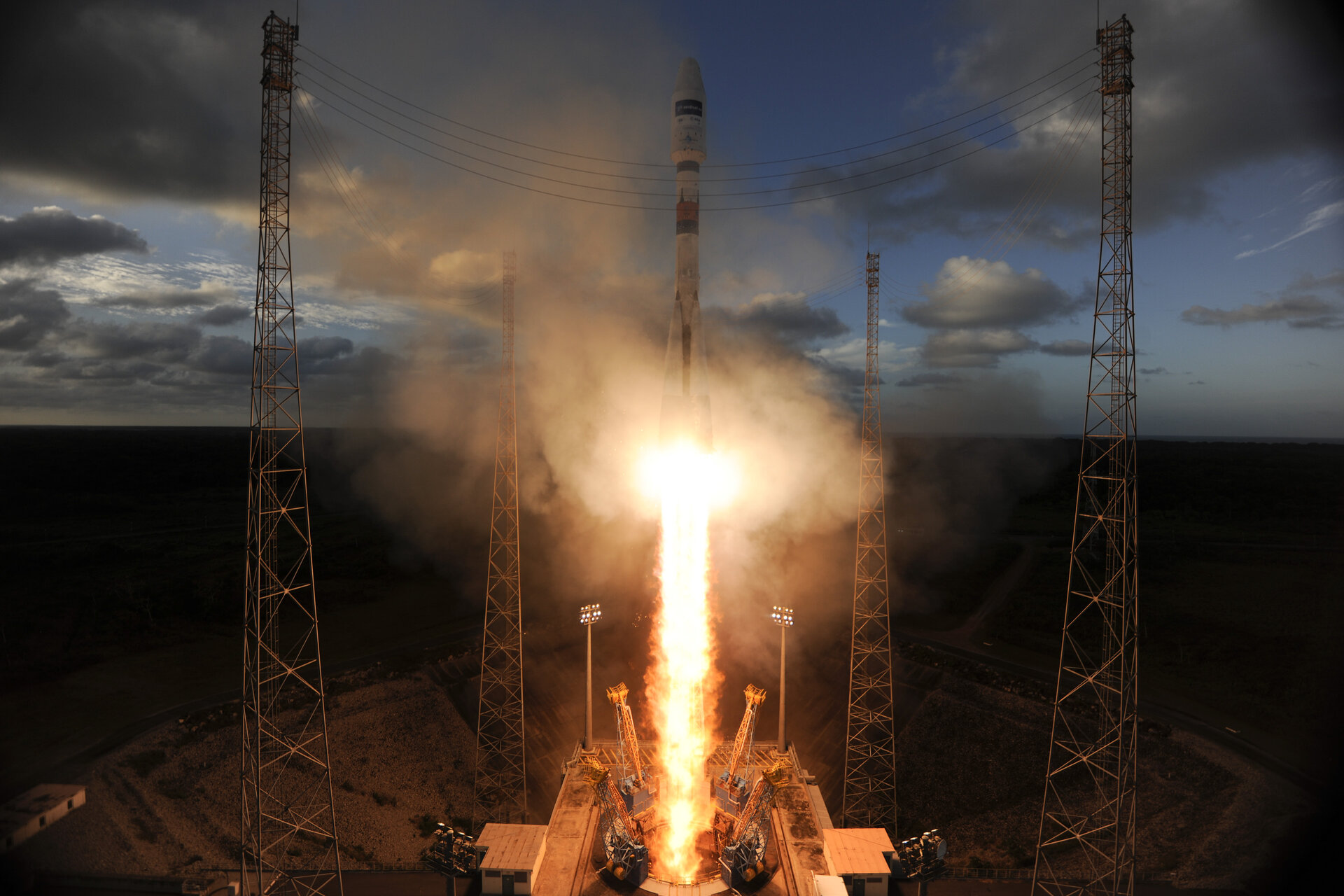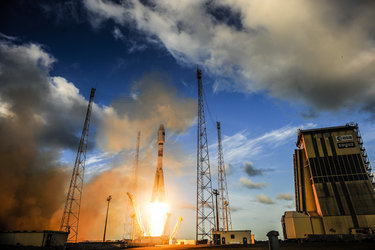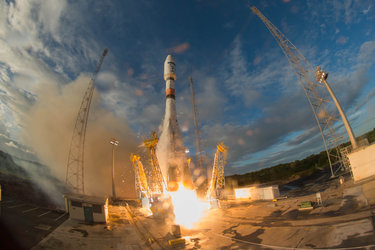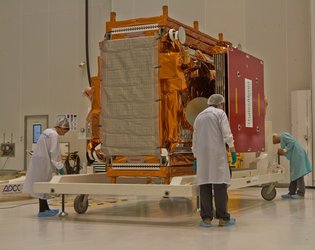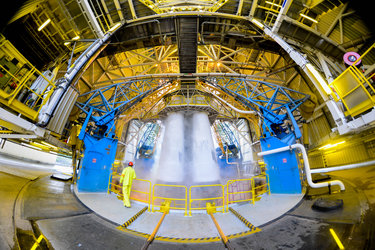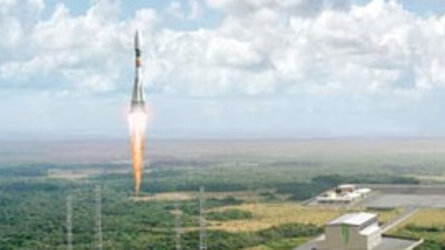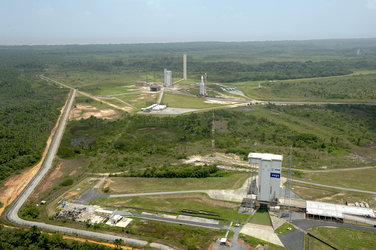About the launch
Sentinel-1A was launched on 3 April 2014 on a Russian Soyuz rocket from Europe’s Spaceport near Kourou in French Guiana, an overseas department of France. Sentinel-1B was launched from the same site on 25 April 2016.
The Soyuz launcher is the workhorse of the Russian space programme, in continuous production since the 1960s, and a descendant in design terms of the R-7 rocket that launched Sputnik in 1957, inaugurating the Space Age.
Soyuz has performed more than 1700 manned and unmanned missions. It is designed to extremely high reliability levels for manned missions – today supporting operations of the International Space Station.
The Soyuz-2 version used at Europe’s Spaceport is Soyuz-ST. This three-stage rocket (plus Fregat upper stage) is assembled horizontally in the traditional Russian approach, then moved to the vertical so that its payload can be mated from above in the standard European way.
In 1964 the French Government chose Kourou, from 14 other sites, as a base for launching satellites. When ESA came into being in 1975, the French Government offered to share its Centre Spatial Guyanais with the Agency.


Access the video
To date, ESA has invested more than €1.6 billion in improving and developing the ground facilities.
Geological and topographic surveys began at the site selected for Soyuz in 2003. The site is known as Ensemble de Lancement Soyuz – or ELS for short.
The launch area is almost identical to the other Soyuz sites in Kazakhstan and Russia, although adapted to conform to European safety regulations.

The site consists of three main zones: the launch platform, the preparation area (known in Russian as монтажно-испытательный корпус; montazhno-ispytatelniy korpus, or MIK), where the three stages are assembled horizontally and checked, and the launch control centre.
The MIK is connected to the launch pad by a 700 m-long railway, which is used to transport the vehicle in a horizontal position. The launch control centre is a kilometre from the pad.
A 45 m-tall mobile gantry provides a protected environment as the payloads are installed on the vertical launcher. Its internal movable work platforms provide access to the Soyuz at various levels.


